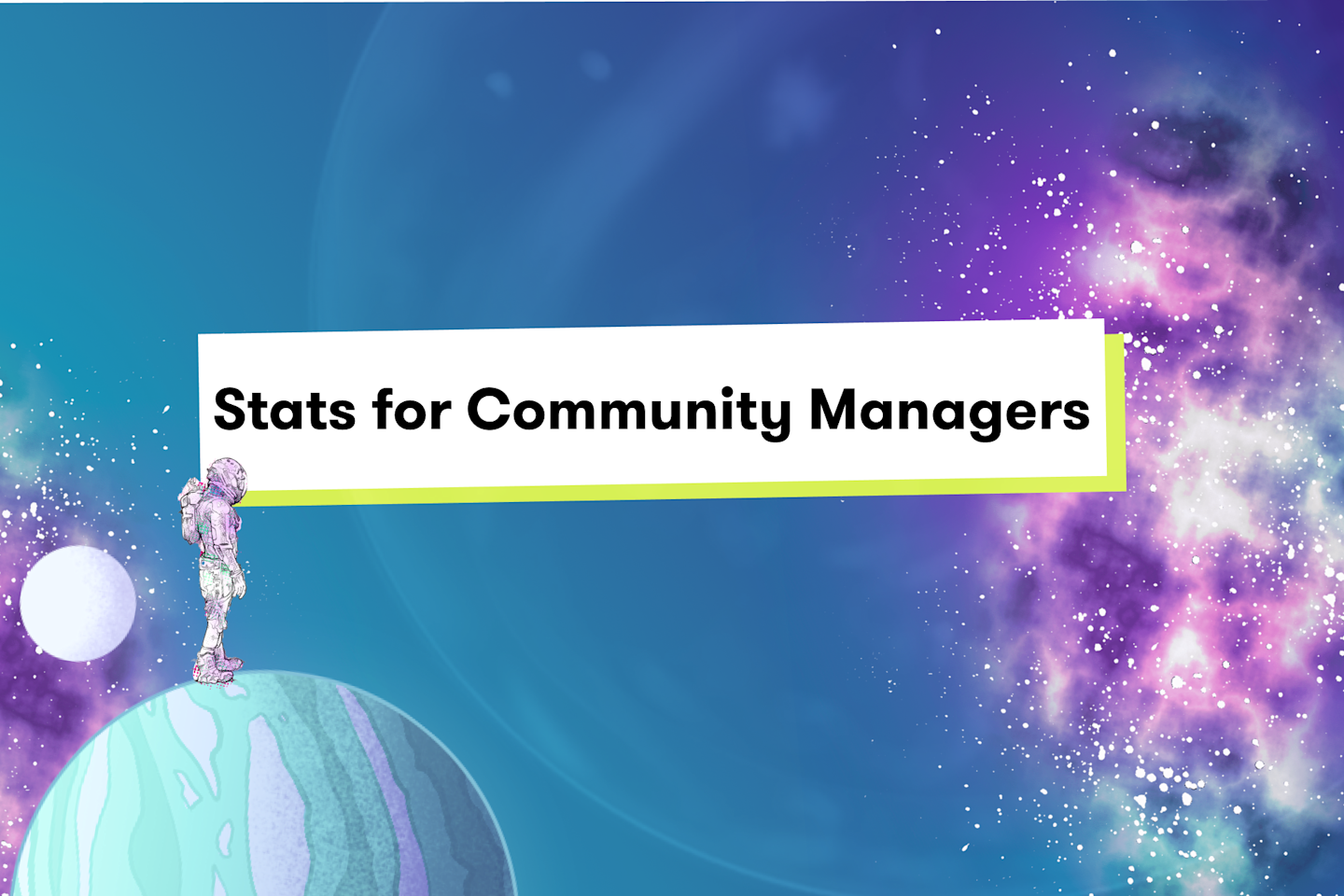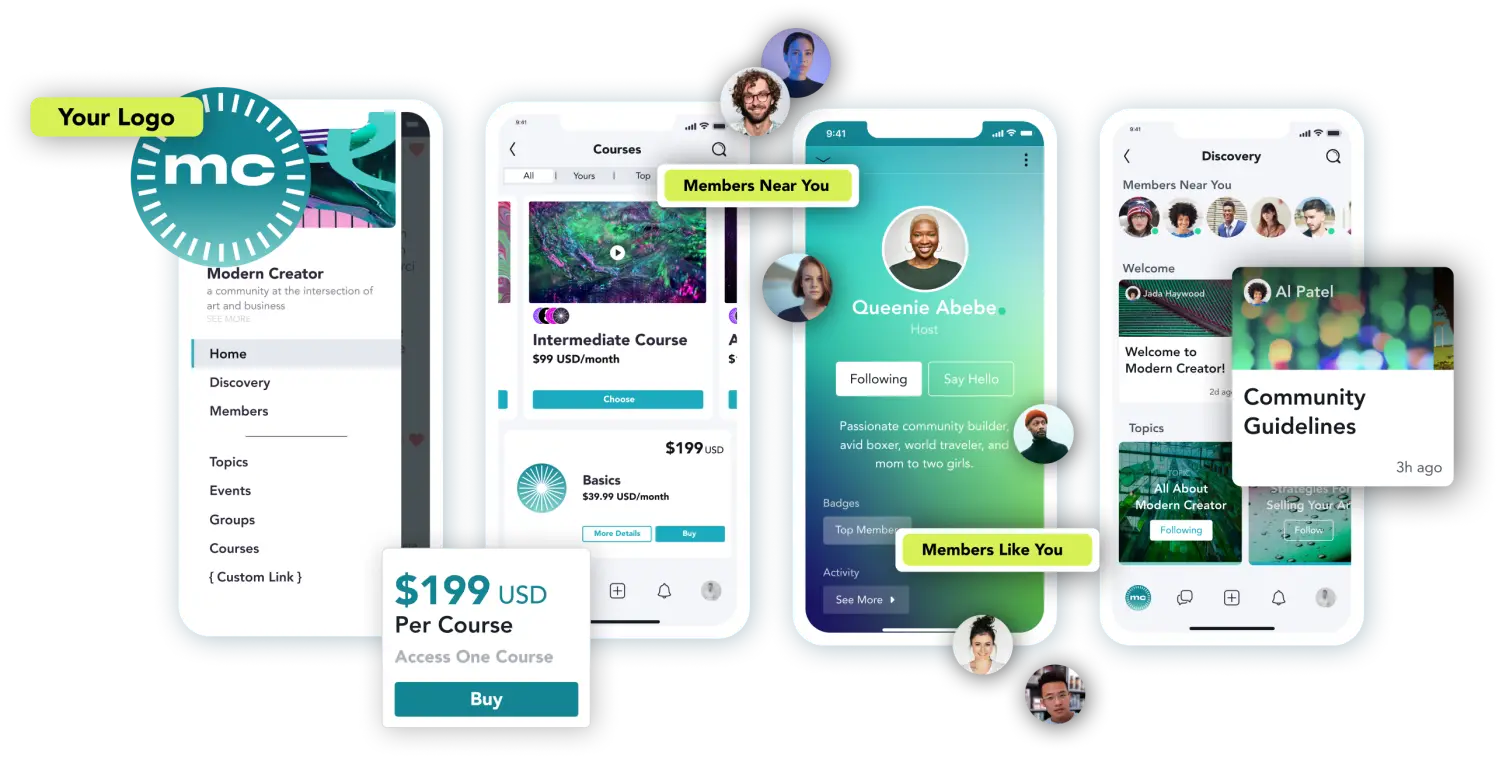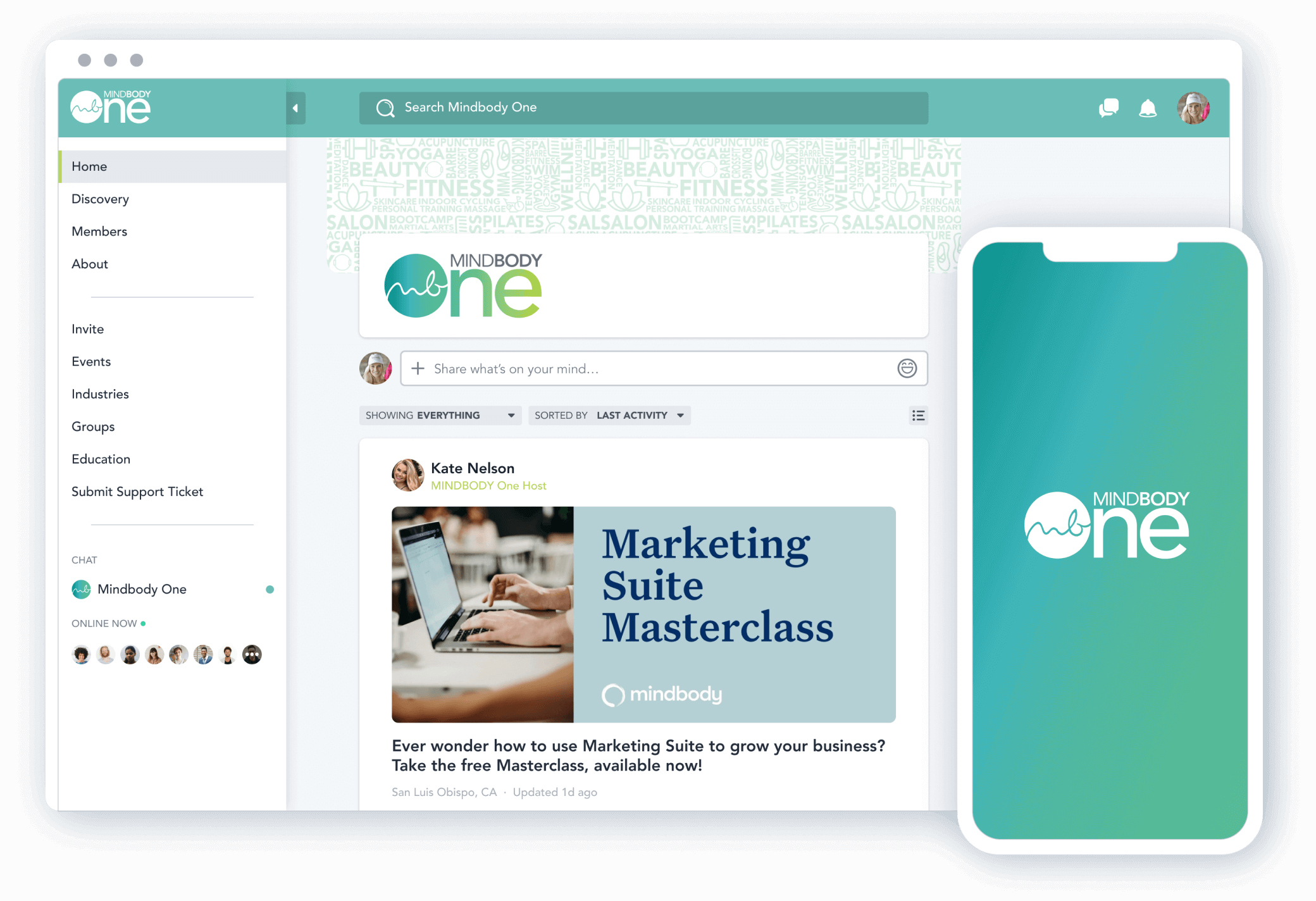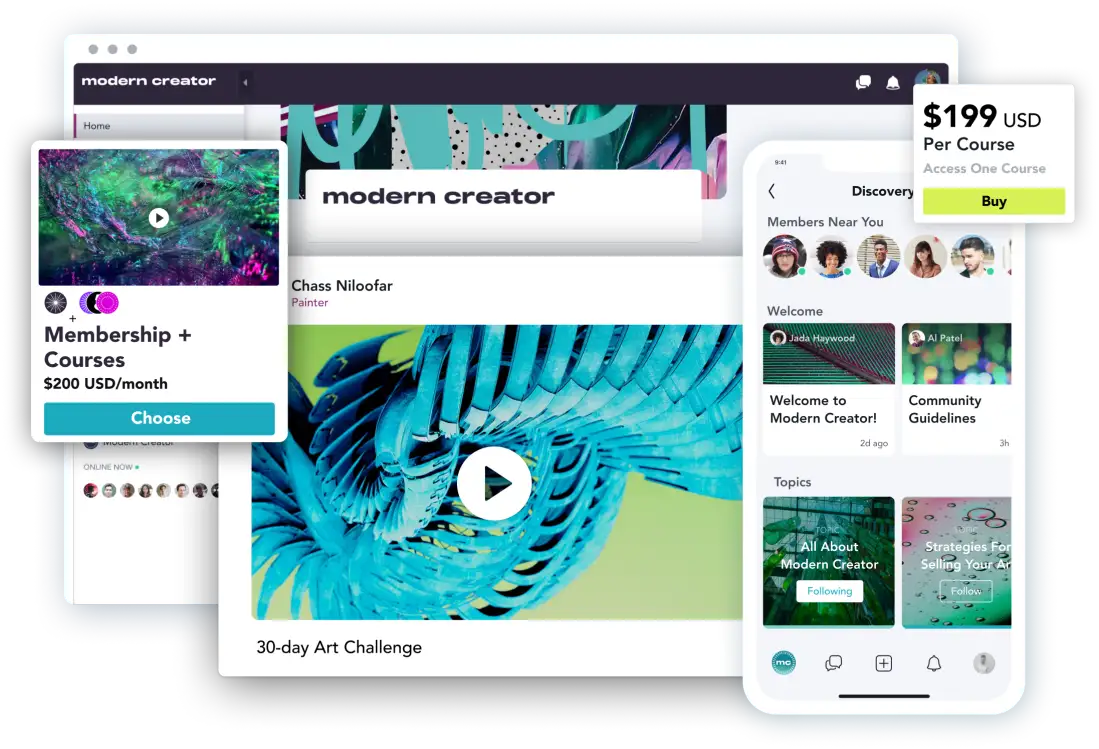Communities & Memberships
Essential Online Community Statistics For Community Managers in 2025
Community Managers have never been more important than now to the success and longevity of businesses. We’re breaking down key insights for why that is.
Author
Phillip Russell, Content & Editorial Manager, Mighty Pro
Last Updated
February 6, 2025

Table of Contents
The past few years have shown us just how powerful online communities are for brands, organizations, and agencies to increase revenue, gain deeper insights into their audience, and extend the lifespan of their content.
That means the role of the community manager has never been more important than ever. And if you’re reading this, you probably know this already. Each day you’re logging into a Facebook Group, a Slack channel, a Discord, or a dedicated online community platform and interacting with members directly.
While it’s clear to folks whose job it is to interact with community members daily, it can be hard to articulate just how important community is for the longevity of businesses going forward, whether you’re a solo creator or a large organization.
Ahead, I’ll break down some key insights we’ve learned at Mighty Networks about the role community plays today for businesses around the world.
Churning out content has diminishing returns
We conducted the largest study about online creators ever done and found some eye-opening statistics that every community manager should know.
After talking with over 1,600 creators who are earning an income through creating content, 93% say that being a creator has introduced stresses that have “negatively impacted their lives,” with 45% saying they’ve experienced “big emotional lows.”
But why is that? Because 65% of the creators we talked to felt they were overworked and underpaid for the amount of work they put into their business. If you’re a community manager, then you know just how many hours are spent creating new posts to build engagement, running challenges, and creating new content and resources for members.
All of these content avenues are assets that have their place in any great online community strategy, but they also lead to burnout if that’s all you're doing. In fact, we’ve seen from our research that more and more successful course creators, professional networks, and agencies are getting more out of paid membership than a content generation engine. Why? Because within a thriving online community member product content by themselves and start up conversations with others.

Back to the numbers, we discovered through our study that 57% of creators see direct revenue through subscriptions and memberships as more crucial to their future than social platform revenue. But only 24% of creators have a website where fans can pay to participate in creator-led challenges or activities.
One community platform recently found that across 100,000+ monthly subscriptions, 70% of their creators who offered paid subscriptions were generating a median of $1,000 per month from just 26 members paying $39.55/month. The scalability of online communities is much higher than endlessly putting out content and hoping for a hit.
A community-focused approach unlocks growth
What’s proven to be increasingly effective is a community-focused approach for brands, organizations, and agencies to increase their revenue, create more engagement with their products, and grow brand loyalty.
A stark statistic that speaks to how powerful online communities can be is that people actually want to be in them! One study revealed that people spend most of their time online with colleagues in professional networks(41%), followed by friends, family, and experts. What this suggests is that online communities foster a group of dedicated people who have a specialized interest. People are using communities to connect with people outside of their direct circle, this is a powerful energy to leverage.
One statistic that struck me is from a CMX research report from 2016, 85% of marketers and community managers believed that having a branded online community improves the customer journey and increases brand trust.
More and more, brands are realizing just how effective online communities are too. From the same report, it was revealed that over 58% of brands have both online and in-person communities to grow their business.
Online communities are a powerhouse for better understanding your customers better as well. Why is this so important? Because each time that community managers engage with members of the community, they are acquiring more data to leverage in marketing campaigns, content development, and more.
In fact, CMX reports that 46% feel branded communities changed how companies think about customers. 86% reported experiencing “deeper insights into customer needs” and 82% say they have gained new ways of asking questions and receiving customer insights.
In many cases, communities give brands an opportunity to test the use of branded communities in a more controlled, private environment, with 54% of respondents indicating that the company’s experience with private online communities has “changed the way we think about collaboration in general”.
According to Inversofts’s research, 77% of companies believe online communities drastically improve brand exposure, awareness, and credibility. This is why community management has become an essential part of the growth strategy for highly successful businesses.
Online community building has been a key to unlocking growth for many creators. In our study, we found that 77% of creators say their ability to earn revenue has improved since they launched a community where followers pay to join and connect with each other, not just the creator. 77% also say their ability to grow follower count has improved since they launched a community.
Benchmarks to Guide You
Whether you’re a community manager from a brand new community or a veteran who’s been doing it for years, following the numbers for active members is key to measuring growth.
The industry-standard way of going about this are the metrics WAM/MAM & DAM/MAM. In fact, 57% of the community professionals track this. These are the ratios of Weekly Active Members to Monthly Active Members, and then Daily Active Members to Monthly Active Members. When used together, these metrics give you a complete picture of how healthy your retention is and whether new members are building habits around your community.
A great benchmark to shoot for is a ratio fo 50% WAM/MAM. This suggests members visit your online community on average two to three weeks per month. While a radio of 20% DAM/MAM suggests members visit your community an average of six days of the month.
But why are these metrics so important for community managers to monitor? The reason is simple, they give a clear view for how people are using your online community and what kinds of value they are getting out of the content you offer. And once these metrics are captured, you can begin reaping the benefits of all that you’ve been doing.
Community management is easier when you use a great platform

At the end of the day, the statistics we’ve talked about today are much more visible when you’re using an online community platform that helps you do the work. As communities grow in size and new content strategies are deployed, it can be incredibly difficult for community managers to do it all–especially if they are using a half dozen tools to interact with people.
We’ve talked to thousands of community managers, leaders, organizations, and individuals who all were looking for ways to better manage their communities–or start them all together.
Choosing a dedicated online community platform is the first big step toward easing many of the pains that community managers face. Why? Because it's less time juggling a number of platforms, and more time cultivating a one-stop-shop for your organization to release new content and experience, but also create a space your members actually want to spend time in.
With Mighty Pro, you get an all-in-one community platform as well as fully-branded apps for iOS and Android devices that allows you, your team, and your members to interact with your community on the go. This is an incredibly effective tool for community managers to create thriving communities that members actually want to be in. And when members want to be in your community, that means they will be the ones contributing content and starting conversations which takes the workload off your shoulders.

Recently, I talked with Kate Nelson, Global Community Lead, for Mindbody. Nelson manages the Mindbody One network on Mighty Pro which brings together over 16,000 Mindbody and Booker business owners and managers in the health and fitness space, to offer support and collaboration opportunities.
One thing she pointed out to us is that creating a safe space for the Mindbody One community in an all-in-one platform has allowed them to find their super-members or “champions” who work as ambassadors for the community. Within their community, Champions utilizes all of the features of Mighty Pro from posting, hosting native live streams, answering questions, and so much more. It’s allowed Nelson and her team to better understand her members in ways not possible if they were juggling numerous audiences across many platforms.
Nelson broke down a key example of how the Champions are changing the Mindbody business for the better. She told us, “Our Champions get to sit down with execs for a full day at a retreat we put on and talk about what’s working and not working in the community. Our CEO gets this opportunity to really hear from the voices in the community, about what they're hearing at events, what they're hearing on Facebook, and even communities that Mindbody One isn’t a part of. This is invaluable, and some things that’s made possible by having our own safe space to nurture these relationships with our members.”
Wrap-up

Community management is an essential job for any successful brand, organization, and agency today, but there are still some people who don’t realize just how transformative the community can be for one's business. The statistics I’ve gone over today, however, will light the way in showing these people just how important it is to invest in community now, rather than later.
Ready to start building your community?
Start a free 14-day trial to explore Mighty—no credit card required.
More like this
Join Mighty Community
Learn the principles of Community Design™ (and see them in action) alongside thousands of creators and entrepreneurs. It's free to join!

Online Courses
Creating a Course
Teaching a Course
Course Platforms
Selling a Course
Communities & Memberships
Community Platforms
Managing a Community
Building a Community
Growing a Community
Monetizing a Community
Content Creation
Creators & Entrepreneurs
Monetization
Content Creation
Starting a Business
Website Builders
Creating & Managing a Website
Events
Event Platforms
Hosting & Marketing Events
Branded Apps
Creating a Mobile App
Coaching Apps
Community Apps
Coaching
Mastermind Groups
Starting a Coaching Business
Coaching Platforms
Filter by Category
Online Courses
Communities & Memberships
Creators & Entrepreneurs
Events
Branded Apps
Coaching
Build a $1 Million Community
This free masterclass went viral—sign up to learn why.

























